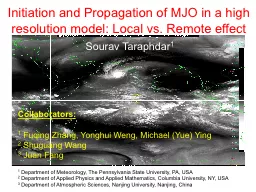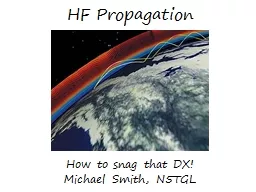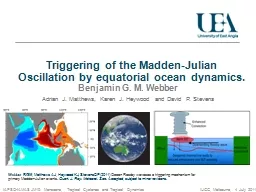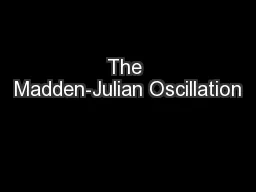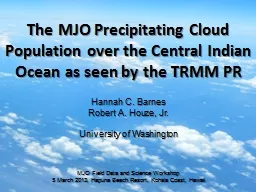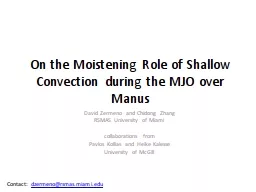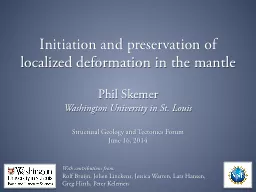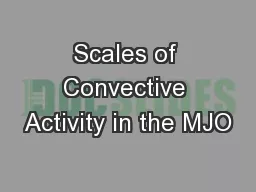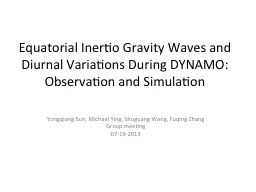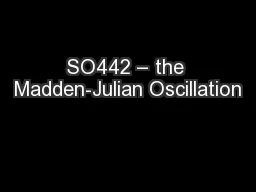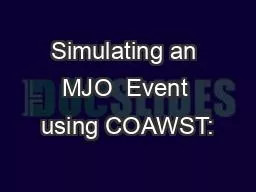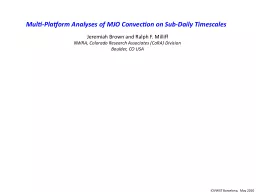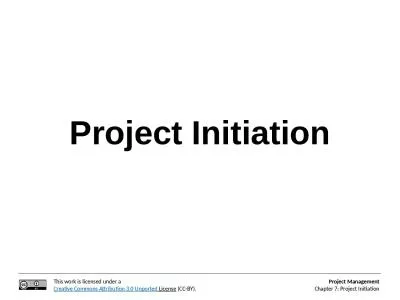PPT-Initiation and Propagation of MJO in a high resolution mode
Author : ellena-manuel | Published Date : 2017-03-30
vs Remote effect Sourav Taraphdar 1 Collaborators 1 Fuqing Zhang Yonghui Weng Michael Yue Ying 2 Shuguang Wang 3 Juan Fang 1 Department of Meteorology The
Presentation Embed Code
Download Presentation
Download Presentation The PPT/PDF document "Initiation and Propagation of MJO in a h..." is the property of its rightful owner. Permission is granted to download and print the materials on this website for personal, non-commercial use only, and to display it on your personal computer provided you do not modify the materials and that you retain all copyright notices contained in the materials. By downloading content from our website, you accept the terms of this agreement.
Initiation and Propagation of MJO in a high resolution mode: Transcript
Download Rules Of Document
"Initiation and Propagation of MJO in a high resolution mode"The content belongs to its owner. You may download and print it for personal use, without modification, and keep all copyright notices. By downloading, you agree to these terms.
Related Documents

